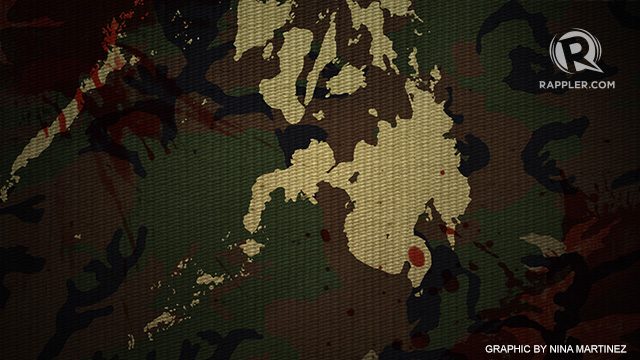SUMMARY
This is AI generated summarization, which may have errors. For context, always refer to the full article.

I was 12 years old when my parents sent us to Dumaguete, my mother’s birthplace, to escape an impending attack on Jolo by Moro National Liberation Front (MNLF) fighters. I remember rehearsing for our graduation song and designing our graduation dress for our incoming commencement exercises in March of 1974.
But the tension between the Philippine military and the MNLF fighters often erupted in an exchange of gunfire. We were used to having our classes at the Mohammad Tulawie Central Elementary School interrupted by bomb explosions and gunfight that sounded closer and closer every day. The school authorities decided to have a mass promotion and told us that classes had ended in February instead of March and we were free to go home.
My sister and I were fortunate to have escaped the town earlier before the MNLF came stealthily in a group of small bancas deep into the night of February 7, 1974, paddling underneath the frail bamboo houses on stilts of the townsfolk of Jolo.
Dr Virginia Villanueva, a doctor at the Sulu Provincial Hospital, said members of the Philippine Constabulary (PC, now the PNP), welcomed the MNLF fighters as Muslim brothers and fellow Jolo residents. The battle to occupy Jolo was fought, the battlefields were the Notre Dame of Jolo, the airport, and the Chinese pier, which was the center of business. Commercial planes were no longer allowed to land, neither were commercial ships.

My parents were government employees. My father was an assistant provincial fiscal, while my mother was a clerk of court of Jolo. They walked toward the pier, past dead people in the streets. The stench was terrible.
The military questioned all the men, suspicious of them being members or sympathizers of the MNLF fighters. Those who were suspected of being MNLF rebels were taken to the Perlas Theatre, where they were tortured and shot. My father was interrogated and asked what his occupation was. When he answered that he was a prosecutor, the soldier spat on the ground. “Who cares? We do not recognize fiscals or mayors or governors! The military’s in control.”
This was martial law in Jolo, and the immediate focus was to crush the rebellion.
Some of my classmates’ houses were razed to the ground. There was looting in the stores and homes of residents. A friend of mine, Wilhelmina Aluk, narrated that she saw bags containing gold jewelry just left on the streets. No one cared to bring them along as they were just added weight.
People fled for their lives. Most people waited for days for the naval ship to take them to Zamboanga City and then to Manila, where they stayed with relatives. From the chaos and the town’s burning, my aunt, Carolyn Que, a teacher at Sulu Tong Jin Elementary School, gave birth on the naval boat earlier than her due date.
Dr Basil Jajurie and his cousin, Dr Utuh Isahac, were among those political prisoners placed behind bars in Jolo and Zamboanga. He was charged with helping treat MNLF fighters. The two-week ordeal behind bars, however, did not embitter him, but rather emboldened him to work for the people of Jolo.
Medical supplies were few and far between, and there was not enough facilities to conduct medical procedures. He and his fellow doctors at the Sulu Provincial Hospital had to improvise and use whatever resources they had to save lives and treat people.
Eventually, it was the 14th Infantry Battalion under General Mison that was able to take control of the town in mid-February. Sources noted that 20,000 civilians, military, and soldiers died during the battle for Jolo. The rebellion may have been crushed, but the sentiments of “liberation” wafted and waned through the years.
Rebellion and the response of government to declare martial law was done in 1972 and it did not work. The names of the rebel groups may differ – from MNLF to MILF to Abu Sayaff, depending on their leaning. But despite numerous panel discussions and peace talks, none has specifically addressed the fundamental root of the problem: economic development and income disparity.
Religious ideologies and the idealistic quest for liberation from the national government are also important, but are secondary issues. If educational, job, and business opportunities are created, supported, and sustained for the people of Jolo and outlying areas, then peace will be within reach.
Lives have been lost and, as tragic as it sounds, war and the declaration of martial law will never solve the problem. Not in a hundred years.
A survivor, Dr Villanueva, saw an MNLF fighter, fatally shot by a soldier during the fight at the Notre Dame School of Jolo, come crashing down the stairs. With his last breath, he wrote on the wall with his bloodied hand, “We will fight till the end.”
The lengthy quest for peace goes on while there is still life. But until there is real economic development, war and martial law will never solve the problem. – Rappler.com
Agnes Aliman is a BA Mass Communication graduate of Silliman University, and has an MA in Asian Studies from the University of the Philippines. She has worked with the National Power Corporation as chief of publications; the CA Examiner in the US as account executive; the Confederation Trust Company in Canada as customer service representative; and the United Nations Development Programme in the Philippines as communications specialist. She is a mother of 4.
Add a comment
How does this make you feel?
There are no comments yet. Add your comment to start the conversation.